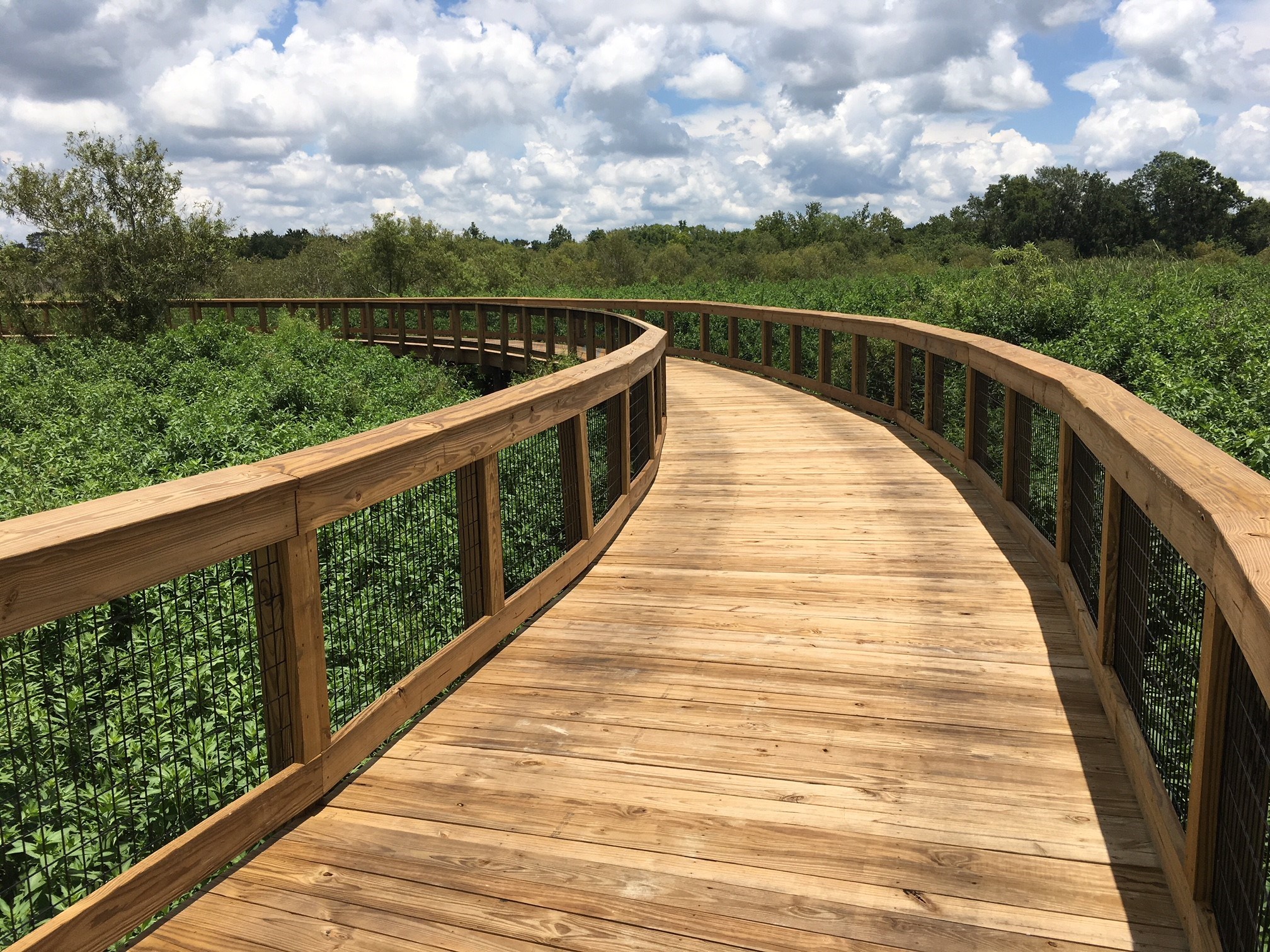You might notice a field blooming with purple muhly grass or yellow prickly pear cactus flowers near trail marker 4. This 3.5 acre site was dominated by cogon grass and other invasive plants. In the summer of 2021, over 16,000 native Florida wildflowers and grasses were planted to improve this habitat and educate visitors on the importance of native Florida plants.
Why are native Florida Plants important?
- Provide habitat for wildlife
- Increase Florida's biodiversity
- Seeds produce food for wildlife
- Roots & microbes benefit the soil
- Flowers help native pollinators
